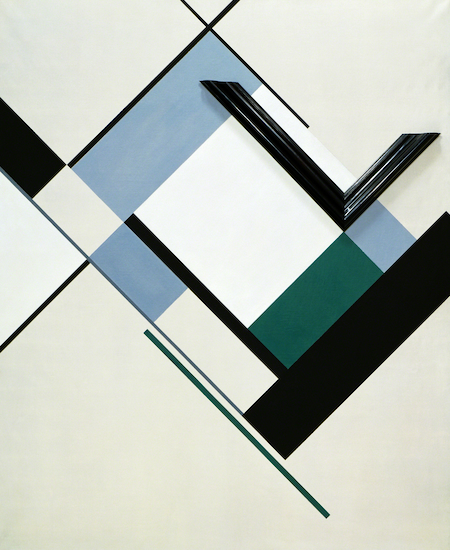Artist Birthday: Friedrich Vordemberge-Gildewart
Vordemberge-Gildewart was a major figure in the Concrete Art that developed in Europe in many countries as a form of pure abstraction. It encompassed many individual movements, including Constructivism, Neo-Plasticism (De Stijl), and Rayonism.
Artist Birthday for 7 November: Friedrich Vordemberge-Gildewart (1899-1962, Netherlands, born Germany)
|
|
Vordemberge-Gildewart was committed to nonobjective abstraction, which he termed "absolute art". He used color, form and contrast of positive and negative space to create visual stability among unequal geometric components that were very similar to the forms in De Stijl painting. His geometric compositions often emphasized diagonal movement, and he often created multiple versions of his compositions at the same time.
Background
The progression in art towards abstraction that occurred before World War I (1914-1918) was not completely stifled by the war. Although many artists returned to more traditional, figurative styles after the war, many artists were affected by the pointless destruction of the war. This resulted in the exploration of not only such anti-art movements as Dada and Surrealism, but also the further exploration of reductive, minimalist abstraction. This strain of modernism had been pioneered in both Russia (with the Constructivists and Rayonists) and the Netherlands (with De Stijl). These movements had stressed the primacy of geometric shapes and absence of any personal mark in art, with an emphasis on the superiority of imagination over content or narrative.
Gruppe K (K for Konstructivismus, Constructivism) was an artists' collective who were committed to the Constructivist vision of art that was current in the Bauhaus school (1919-1933). Bauhaus stressed the combination of fine art aesthetics with industrial design. Constructivism was characterized by geometric abstract forms influenced by industry and machines. The two schools became very influential during the 1920s in typography and graphic design.
Friedrich Vordemberge-Gildewart was born in Osnabrück, Germany. In 1919 he went to study architecture and sculpture at the Art Trade School and Technical High School in Hanover. That same year he began to paint, using a totally nonobjective abstract visual vocabulary that he subsequently used throughout his career. In Hanover his work was impacted by his association with Russian Suprematist artist El Lissitzky (1890-1941) and Theo van Doesburg (1883-1931), one of the founders of the De Stijl geometric abstract movement. Vordemberge-Gildewart experimented with both Suprematism and De Stijl, since both movements were concerned with an aesthetic of absolute reduction to basic geometric shapes and muted palette.
After his first solo show in 1929 in Paris, Vordemberge-Gildewart associated with the geometric abstract group Circle and Square (Cercle et Carré), and the group Abstraction-Création, a group of artists who sought to reinvigorate abstraction during a resurgence in representational art during the 1920s. After moving to Berlin in 1936, his artwork was labeled as "degenerate" and un-German by the Nazis, so Vordemberge-Gildewart moved first to Switzerland and then to Amsterdam, where he stayed through World War II (1939-1945), becoming a Dutch citizen.


Comments